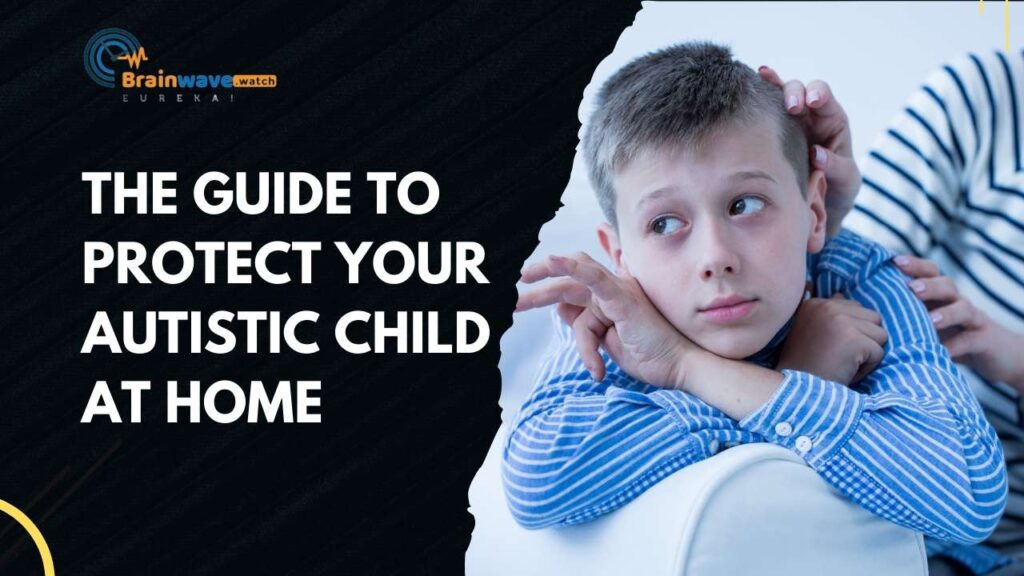Did you know that nearly one in two children with autism wander away from safe places? This alarming statistic highlights a critical aspect of autism spectrum disorder (ASD) that often goes unnoticed.
Autism wandering refers to the tendency of individuals with ASD to leave designated safe areas, which can lead to dangerous situations. Whether it’s a child running off during a family outing or an adult straying from a care facility, the risks associated with wandering are significant.
By raising awareness, we can better protect individuals with autism and support their families in creating safer environments.
The Prevalence
Wandering is a significant concern in the autism community. Studies indicate that approximately 49% of children with autism will wander at some point. This behavior is most prevalent among children aged 3 to 6 years, when curiosity and impulsivity peak.
To put this in perspective, only about 10% of non-autistic children exhibit similar wandering behaviors. The difference underscores the unique challenges faced by families with autistic children.
| Group | Wandering Percentage |
|---|---|
| Children with Autism | 49% |
| Non-Autistic Children | 10% |
As noted in a recent study, “The prevalence of wandering among individuals with autism is alarmingly high, necessitating proactive measures for prevention.”
Why Do Individuals Wander?
Wandering in individuals with autism can be triggered by various factors. One common trigger is a strong sense of curiosity.
For instance, a child might see a butterfly outside and feel compelled to explore. This natural urge can lead them away from safe environments.
Another significant factor is sensory needs. Many individuals with autism experience heightened sensitivity to sensory stimuli.
A crowded mall, for example, can become overwhelming. To escape the noise and chaos, a child might wander off in search of a quieter space.
Communication challenges also play a vital role in wandering behaviors. When a child struggles to express their needs or feelings, they may resort to wandering as a way to seek help.
For example, a non-verbal child might leave a classroom to find a trusted adult when feeling anxious. Understanding these triggers is essential for families and caregivers to implement effective prevention strategies.
Potential Dangers of Wandering
Wandering poses several significant risks for individuals with autism. Understanding these dangers is crucial for families and caregivers.
- Risk of injury or accidents: When wandering occurs, individuals may encounter hazardous situations. This could range from traffic accidents to falls in unfamiliar places.
- Exposure to unsafe environments: Wandering can lead individuals into dangerous areas, such as busy streets or bodies of water. These environments can pose serious threats to their safety.
- Emotional distress for both the individual and family: The anxiety and fear caused by wandering can be overwhelming. Families often experience increased stress and worry when their loved ones go missing.
Dr. Sarah Thompson, a child psychologist, states, “The emotional toll on families dealing with wandering is immense. It’s not just about physical safety, but also the mental health of everyone involved.” Understanding these potential dangers can help foster awareness and lead to proactive safety measures.
Prevention Strategies
Addressing the risks of autism wandering requires proactive prevention strategies. Here are some effective approaches:
- Developing personalized safety plans: Each individual with autism is unique. A tailored safety plan can help identify potential triggers and outline specific responses during wandering episodes.
- Using technology to track and prevent wandering: GPS trackers and wearable devices can provide real-time location updates. This technology allows caregivers to monitor and respond quickly if wandering occurs.
- Community awareness and involvement: Engaging local communities in autism awareness initiatives can foster a supportive environment. This can include training programs for schools, businesses, and first responders to recognize and assist individuals who wander.
For example, the Johnson family implemented a comprehensive safety plan for their son, Max. They used a GPS Integrated Smart Watch and organized community workshops.
As a result, Max’s wandering incidents decreased significantly, and the local community became more equipped to help if needed.
These strategies not only enhance safety but also promote peace of mind for families and caregivers.
Tech Solutions for Safety
In today’s digital age, technology offers valuable tools to enhance safety for individuals with autism who may wander. Here are three effective tech solutions:
GPS trackers and wearable devices Like Brainwave Watch are designed to provide real-time location tracking. These devices can be worn as bracelets or clipped to clothing. They allow caregivers to monitor their loved ones’ whereabouts. While effective, they may require charging and can sometimes be removed by the wearer.
Smart home technology plays a crucial role in creating a safer environment. Features like door alarms, motion sensors, and smart locks can alert caregivers if someone leaves the home. However, installing such technology can be costly and may require a learning curve for effective use.
Apps designed for autism safety provide resources and alerts for caregivers. These apps can send notifications if a user wanders beyond a designated area. They can also connect families with local services. However, reliance on smartphones means they may not always be accessible to everyone.
By leveraging these technologies, families can enhance safety and gain peace of mind regarding wandering risks.
Building Support Networks
When addressing the risks of autism wandering, creating a strong support network is essential. This network can provide the necessary resources and emotional backing for families facing these challenges.
Role of Family and Friends
Family and friends play a crucial role in supporting individuals with autism. They can help monitor behavior and provide companionship. Their understanding and involvement can significantly ease the stress on primary caregivers.
Community Programs and Resources
Community programs offer invaluable resources for families. Local organizations may provide workshops, social events, and safety training. These programs foster connections among families, creating a sense of belonging and shared experience.
Professional Guidance and Intervention
Professional guidance is vital for developing effective strategies. Therapists and specialists can assess individual needs and suggest tailored interventions. Their expertise can empower families to implement safety measures and coping strategies.
“Building a strong community network is essential for the safety and well-being of individuals with autism.”
By leveraging the support of family, community, and professionals, families can create a safer environment and reduce the risks associated with wandering.
Training and Education
Educating caregivers and educators is crucial in addressing the hidden risks of autism wandering. Proper training equips them with the knowledge to recognize potential triggers and implement effective safety strategies. This understanding can significantly reduce incidents of wandering and enhance overall safety.
Programs designed specifically to teach safety skills have shown impressive results. Research indicates that participants in these programs experience a reduction in wandering incidents by up to 50%.
By focusing on practical skills and awareness, these programs empower individuals and their families to take proactive measures.
Workshops and seminars further amplify this education. They provide a platform for sharing experiences and strategies among caregivers and educators.
These events foster community connections, creating a support system that extends beyond the classroom or home. Engaging in such educational opportunities not only enhances safety but also promotes a more inclusive environment for individuals with autism.
Policy and Advocacy
Current policies addressing autism wandering are beginning to take shape, but there is still much work to be done.
Many states have implemented alert systems to notify law enforcement when a person with autism goes missing. These initiatives help ensure a faster response, potentially saving lives.
Advocacy efforts by organizations such as the National Autism Association have been instrumental in raising awareness about wandering risks. Campaigns like “Big Red Safety Box” provide families with essential tools and resources to keep their loved ones safe. Such initiatives have empowered communities to engage actively in prevention efforts.
There is potential for policy improvements. For instance, expanding training for first responders on autism-related issues can enhance their ability to handle wandering incidents effectively.
Advocating for funding in technology solutions, like GPS tracking, can further improve safety. Overall, comprehensive policy changes can create a safer environment for individuals with autism, ultimately fostering greater community support and understanding.
Broader Implications
The issue of wandering in individuals with autism extends beyond immediate safety concerns. It significantly impacts their quality of life, affecting not just the individuals but their families as well.
When wandering occurs, families often face heightened anxiety and stress, which can strain relationships and disrupt daily routines.
Addressing this challenge can lead to long-term benefits. Families who implement effective safety measures often report improved peace of mind.
This, in turn, allows individuals with autism to explore their environments more freely, fostering independence and confidence.
As we work towards solutions, we must also consider the broader societal implications. A more profound understanding of autism can change perceptions and reduce stigma.
As one advocate stated, “When society acknowledges the realities of autism, we open doors to acceptance and support, creating safer environments for everyone.”
Through education and community involvement, we can cultivate an atmosphere that prioritizes safety while celebrating the uniqueness of individuals with autism.
Personal Stories
For many families, the experience of autism wandering is both heart-wrenching and eye-opening. Take the Johnsons, for instance.
Their son, Ethan, often wandered away during outings. “One moment he was there, and the next he was gone,” recalls Sarah, Ethan’s mother. “It felt like a parent’s worst nightmare.”
The constant worry changed their daily life. Simple trips to the park became stressful missions. They had to rethink their routines and environments to keep Ethan safe. As Sarah explains, “We learned to be vigilant. We couldn’t take our eyes off him, even for a second.”
From their experiences, the Johnsons discovered valuable lessons. They implemented a personalized safety plan, using technology to keep track of Ethan. “We realized that being proactive was key,” says Sarah. “It wasn’t just about keeping him safe; it was about allowing him to explore his world.”
Through their journey, the Johnsons found resilience. Their story highlights the importance of community support and understanding, reminding us all that every step towards safety is a step towards empowerment.
Key Takeaways
Understanding and addressing the hidden risks of autism wandering is essential for families and communities alike.
Here are some key points to remember:
- Risks include: potential injuries, exposure to unsafe environments, and emotional distress.
- Strategies to mitigate these risks: personalized safety plans, technology solutions, and community awareness.
- Community involvement is crucial: fostering understanding and support can create safer environments for individuals with autism.
- Encouragement to take action: whether through education, advocacy, or developing safety protocols, every effort counts.
Addressing wandering is not just about safety; it’s about promoting a fulfilling life for individuals with autism. Together, we can make a significant impact.
Conclusion
As we look to the future, there is hope for advancements in safety that can significantly benefit individuals with autism. Innovative technologies and community initiatives are paving the way for safer environments.
It’s crucial to continue advocacy for effective policies and resources that address the risks of wandering. Every voice matters, and together we can drive change.
Finally, let’s remember that our community efforts can create a ripple effect, fostering understanding and support. By working together, we can ensure a brighter future and a safer world for individuals with autism. Your engagement is key—let’s take action!







